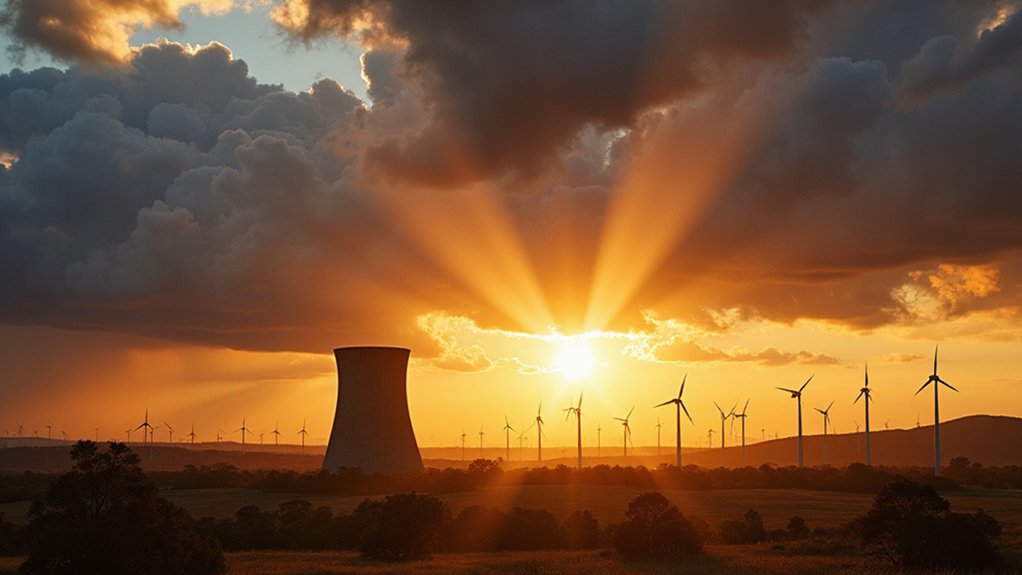Nuclear fusion could finally break humanity’s carbon addiction. Scientists recently produced more energy than they put in—a massive breakthrough. The process replicates our sun’s power using seawater fuel, creating zero emissions with minimal waste. Unlike temperamental renewables, fusion runs continuously without massive land requirements. Private investors are pouring billions into development, with experts predicting grid-connected fusion by the 2030s. The $40 trillion market potential isn’t just hype—it’s clean energy’s final frontier.
While the world obsesses over solar panels and wind turbines, a far more powerful solution to our energy crisis lurks in the shadows of scientific laboratories.
Nuclear fusion—the same process that powers the sun—could deliver clean energy with no greenhouse gases. None. Zero. And unlike its controversial cousin nuclear fission, fusion leaves behind minimal radioactive waste.
Scientists have been chasing this dream for decades. The challenge? Creating temperatures of 100 million degrees Celsius here on Earth. Not exactly backyard science project material.
But in 2022, researchers at the National Ignition Facility achieved something remarkable: they got more energy out than they put in. A breakthrough that changes everything.
The potential economic impact is staggering. Bloomberg estimates fusion could become a $40 trillion market. Not million. Not billion. Trillion. Meanwhile, MIT researchers project societal benefits between $3.6-$8.7 trillion by the end of the century. That’s serious cash for something that sounds like science fiction.
The fusion economy won’t be measured in billions—but in trillions, reshaping the entire global financial landscape forever.
Fusion fuel comes from seawater, fundamentally making it unlimited. One kilogram replaces 10 million kilograms of fossil fuels. Let that sink in. No more oil wars or pipeline politics. No more kowtowing to energy-rich dictatorships. Energy independence becomes universal, not just a campaign slogan.
Of course, challenges remain. The engineering is fiendishly complex. Materials must withstand hellish conditions. Regulatory frameworks don’t exist yet. And the public still confuses fusion with fusion, thanks to decades of nuclear scaremongering.
But progress is accelerating. Private investment is pouring in. ITER, the international megaproject in France, continues construction. Eighty-nine percent of fusion industry insiders expect grid-connected fusion by the 2030s. Commercial plants could follow by mid-century.
While politicians debate carbon taxes and subsidize solar farms, fusion quietly advances. It doesn’t need massive land areas. It works day and night, rain or shine. It creates jobs and eliminates emissions.
Fusion isn’t just another energy source—it’s humanity’s potential escape from carbon dependency forever. The technology’s inherent safety features make it fundamentally different from conventional nuclear power, with no risk of meltdown or runaway reactions. The raw materials needed, such as deuterium and lithium, are abundantly available in nature, with enough to meet humanity’s energy needs for millions of years.








